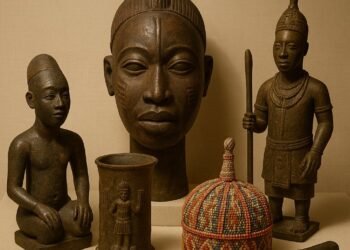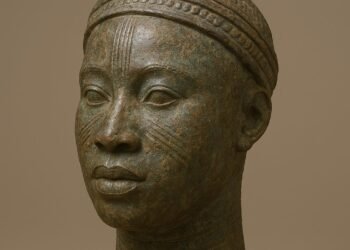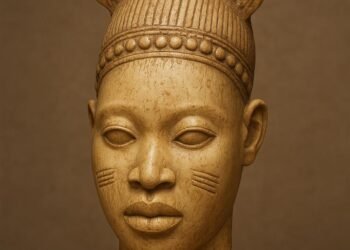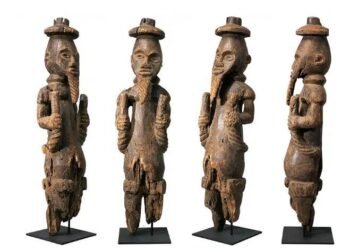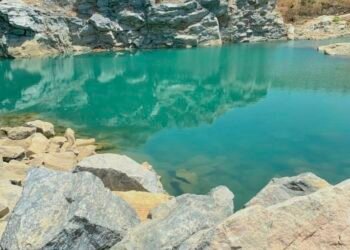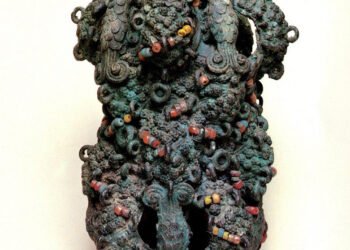The Dogon People: Ancient Culture and Mystical Beliefs
On the Bandiagara Escarpment in Mali, the Dogon people established their civilization. It’s a rock formation that serves as both a fort and a central hub for their culture. Living there helped the Dogon people grow their own special civilization.
They came up with interesting and detailed ideas about the universe, frequently watched the stars, and developed a talent for building and art. People still find their knowledge about stars super interesting.
This mix of where they live and their culture demonstrates how adaptable people can be in changing and utilizing what they have, even when things get tough.
Table of Contents
Where did the Dogon Tribe Come From
The origin of the Dogon is linked to a massive migration. Around the fourteenth to fifteenth century, they arrived in the Bandiagara Escarpment not as indigenous people but as determined immigrants.
Read Also: The Niger River: History, Culture, and Natural Wonders
They were likely fleeing regular strife, the expansion of empire power, and slave raids, but further south. They showed up looking for those cool houses the Tellem people built way up on the cliffs.
And get this, they didn’t just kick the Tellem out. Instead, they moved in, adopted some of the Tellem’s ways, and blended it all together with their own to create a totally new culture.
This tactical move to the cliffs was a genius. The natural fortification provided unparalleled protection, allowing their unique society to develop secure seclusion for centuries. This history book of theirs is not one of migration, but of the conscious, cunning establishment of a sanctuary.
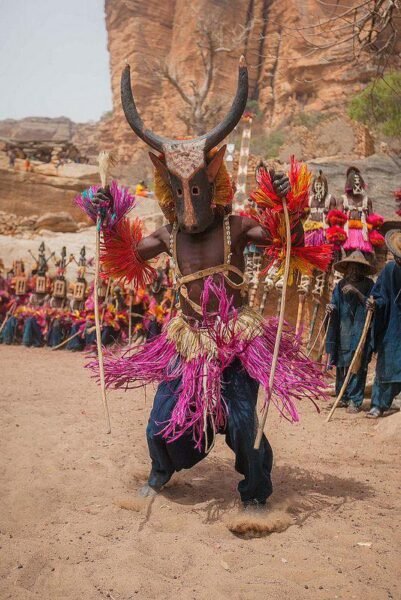
Architectural Marvels of the Dogon
For the Dogon, architecture is a physical expression of their philosophy. Their villages are not randomly arranged; they are intentionally designed to mirror the human form, a layout that connects daily life to a larger cosmic order.
At the heart of this communal body lies the toguna, the men’s meeting house. Its low, heavy roof is a genius of social design, physically preventing anyone from standing up during debates to ensure discussions remain calm and resolutions peaceful.
Equally significant are the distinctive granaries. These are not just simple storage huts. Their pointy straw roofs, which resemble a symbol of masculinity, sit atop round, dirt bases that represent femininity. Together, these buildings create a great balance. It is a daily reminder of the matching forces that keep life and the community going. Each building has its own story.
Social Structure and Community Life
For the Dogon people, family and mutual support are of the utmost importance. Their community is structured with extensive family lines, all tracing back to the same male ancestor. Each line is led by the hogon, the oldest person around. But he’s not just a leader; he’s like the heart and the wise man of the whole group.
The Dogon also have a unique system where people are grouped by what they do best, such as farming, working with metal, making leather goods, or telling stories. Every job matters and keeps the village going strong.
Everyone does their own thing, but they count on each other a lot. The metalworker’s tools make the farmer’s life easier; the farmer’s food keeps the leatherworker happy; and the storyteller keeps our history fresh.
Life here is about tending the fields, crafting, and attending ceremonies that bring the people together. The people are not just folks doing their own thing; they’re one big family working together.
The Dogon People Beliefs
To the Dogon, the religious and secular are inseparable. They firmly believe in Amma as the ultimate creator who set up the way the whole world ought to operate in a good way. Of most importance to them are the Nommo, who are, by extension, the children of Amma from long, long ago.
They consider these Nommo to be kind, water creatures that taught humans what they needed to know, such as how to use language and how to live together.
Because these are things of water, people in the village see them as very important when they pray for rain so that their plants may grow healthy.
Read Also: The Legacy of Timbuktu: Africa’s Ancient Knowledge Center
It is not an abstract idea, but something very concrete in their daily living. They engage in ordinary activities, and they also have special moments throughout the year to honor their ancestors and appreciate nature.
These movements hold everyone together, fortifying the community, and they pray for everyone’s good health and prosperity from above. Their spirituality is basically them constantly talking to the universe
The Dogon People Sirius Mystery
The Dogon people possess remarkable knowledge about the universe that has been captivating experts for years. It’s pretty clear they’re experts on the Sirius star system.
The Dogon people were talking about Sirius B way before the cool telescopes came around to prove it. They described it as this super heavy star chilling next to Sirius A, which is already amazing.
What makes it really mind-blowing is that they figured this out without all the gadgets we have today, making you wonder, How did they even know?
Some people thought that maybe aliens had visited them a long time ago. However, others believed the Dogon had spent generations carefully observing the sky.
For the Dogon, there is more to science. Material from space is built into their myths and religion. The Sirius system is linked to the Nommo, whom they consider their ancient teachers.
And it is an important part of their Sigui party that happens every 60 years. Their understanding of space is not just a set of facts, but a part of who they are and how they experience the world. It shows how they feel as though they are connected to everything out there.
The Dogon People Mask
In Dogon culture, art isn’t just about looking pretty. It’s a way to communicate with the spiritual world and holds deep meaning. Think of their famous sculptures as prayers; you can see figures with arms reaching up, always asking Amma and their ancestors for help.
But the coolest art? That’s what they wear! Dancers put on crazy masks and become like containers for spirits.
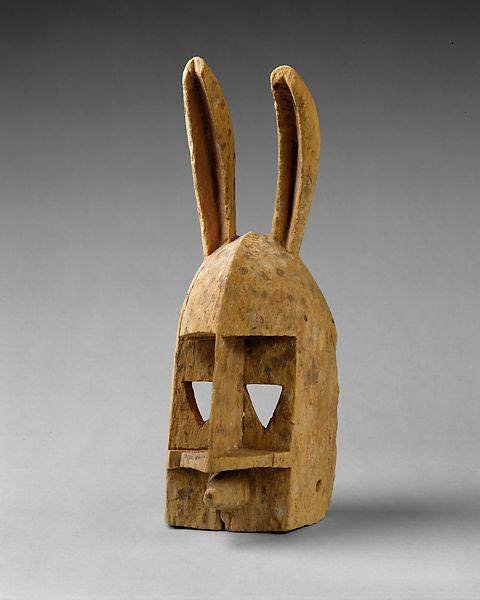
They act out stories that teach lessons and explain how the world works, which everyone in the community understands. The Kanaga mask, which resembles a cross, is extremely popular.
People wear it at Dama funerals to stand for how the creator put everything together. The masks help guide souls to the afterlife. Each line carved and symbol painted sends a clear message to their community.
Through these creations, the Dogon people teach, honor, and preserve their beliefs for years to come.
The Dogon People Key Rituals and Ceremonies
The Dogon community lives on the platform of rituals, where the secret to their behaviors lies in sustaining the universe, their elders, and themselves in perfect harmonious balance. Of utmost significance is the dama, a death ritual that is anything but melancholy.
It is a multi-day, colorful farewell complete with intricate mask dancers to escort the deceased into eternity and usher their soul safely into the afterlife.
This is also an open ritual whose intention is to transmit profound knowledge to the initiates. Deeper is the Sigui ceremony, which only occurs once every sixty years. This is a major celebration marking the rebirth of the universe and the cycle of the Sirius star.
For this special one-time event, masks are crafted anew, and hidden knowledge is passed on to a new generation of seniors. Such ceremonies constitute the mortar of cultural memory, rooting social ties and holding their world in place for generations to come.
Issues of the Modern World
The contemporary Dogon are faced with a world of advanced expectations. While tourism generates eagerly sought-after revenues, it risks reducing sacred rituals to a spectacle for visitors rather than for believers, destroying their religious significance.
Their world also endangers them gravely. Uncertain rains and constant droughts challenge their traditional agriculture, sometimes yielding meager crops.
New religions, such as Christianity and Islam, have emerged, introducing people to different beliefs that sometimes overlap with existing ones and sometimes don’t. But the Dogon folks are not giving in wholeheartedly.
Read Also: Itaakpa Rock Shelter: Unveiling Nigeria’s Ancient Past
They are compromising together to embrace what they have to embrace while still retaining what is most important to them. Their story still revolves around being strong and able to live today without having to give up who they have always been.
The Dogon People Today
The Dogon people’s story is important not only to researchers but also to a broader audience. Their cool buildings, which fit right into the Bandiagara Escarpment, earned them a spot on the UNESCO World Heritage list. This means their cultural landscape is super valuable to everyone.
But what’s really important is how they show us how to build a society that’s connected to nature and the stars. They know a lot about stuff like space and how to organize their community.
This illustrates the intelligence of humans and our collective desire to understand our place in the universe. Now that everything is becoming increasingly uniform, the Dogon remind us of the great diversity among people.
They’ve been on the earth for a while and have endured many changes, but aren’t going anywhere. They encourage us to find gratitude and hold on to different voices.

